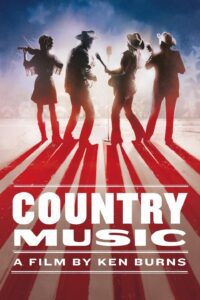After 8 years of production, Ken Burns’ epic film, Country Music, aired to a national PBS audience over a two-week period in September 2019. The primetime national broadcast averaged a 4.43 household rating, with 6.7 million people viewing at any given moment. Episode 1 averaged a 4.63 household rating—273% above PBS’s 2018-19 season primetime average—and reached 12.6 million viewers. By the end of 2019, all 8 episodes had reached 51 million viewers through streaming services. This series had particularly strong viewership in lower-income households and rural communities. And it received broad media coverage, including features in Rolling Stone, NPR, The New Yorker, CNN, and Bloomberg.
PBS produced an interactive website to accompany the site, and implemented comprehensive educational outreach and engagement plans. For example, 30 local PBS stations in 24 states were awarded station engagement grants. These, in turn, produced 90 community activities and engagement events, including the development of local video content to help local communities understand and celebrate the relevance of the history of country music. An additional 57 PBS stations held engagement activities, ranging from a watch-party with the Johnny Cash Boyhood Home and Festival, to a podcast series exploring local musicians, to a youth country music talent search. In the months following the broadcast, local PBS stations across the country continued to hold community screenings and other events to support the series.
In collaboration with Belmont University faculty and a network of advisors culled from middle and high school teachers, the grantees developed an initial collection of 11 media-rich educational resources. This collection can be accessed freely on PBS LearningMedia. Resources in the collection include video clips, modular support materials and lesson plans to enrich social studies, and language arts and music curricula for grades 5-12. These materials enable and encourage students to examine the African American roots of the genre, analyze lyrics and write songs, explore changes in musical style and instrumentation over time, think critically about what it means to be a working musician, and more besides.
In describing what they see as the long-term impact of the grant on individual Americans and American communities, WETA writes, “The rich anthropological and oral histories captured in the Country Music series will continue to provide invaluable insight into the role of this musical genre in communities around the country for decades to come.”
Back to all Stories